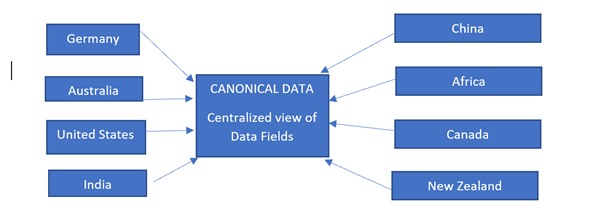CANONICAL MODEL:
1.Canonical model is the Common, Standard model — which is in the simplest form possible based on a standard, common view within a given context.
2.Common data naming, definition, and values within a generalized data framework
3.It is the central hub of data integration mainly to create set of common business terms and definitions to be used by an organization.
4.The goal is to provide a dictionary of reusable common objects and definitions at an enterprise or business-domain level (Common view of business terms)
5.Canonical data models are a type of data model that aims to present data entities and relationships in the simplest possible form in order to integrate processes across various systems and databases.
6.Data exchanged across various systems rely on different languages, syntax, and protocols. A CDM is also known as a common data model.
Why we have Canonical model?
For the people in an organization to have a shared vocabulary for key business things of importance. Agreement on key measurements and calculations used in management reporting. The purpose of a CDM is to enable an enterprise to create and distribute a common definition of its entire data unit.
Automotive Industry — E.g. -Sales Data across locations
From <many to many> to <many to one>

For instance, when Germany needs to send data to China, it first translates its data into the standard syntax (a canonical format or a common format) that are not the same syntax or protocol of China. When the second country China receives data from Germany, it translates that canonical format into its own data format. (canonical language)
